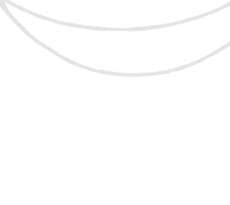My RPG!! Demo 2 Status Update
The last time I wrote about My RPG!! — when the original beta demo came out — was back in 2019. A lot has happened since then, over the course of these few years. This admittedly hasn't really helped with the game development side of things, largely due to said things all being real life bullshit. But I still wanted to try and get something written to update you all.
I'm writing this now because there's been a bit of a shift in development. There's been a bunch of things I've looked back on and realised I need to rethink or do-over, and in virtue of not forgetting about these details, I want to get them all out now. It also means I can more easily talk about said shift, and what made me reconsider some things.
The Vibe
I started work on the next arc of the story actually pretty much right after the original demo. I had a specific idea in mind for its aesthetic: Tatsuya Seo, also perhaps known by the website name "Teddy-Plaza".
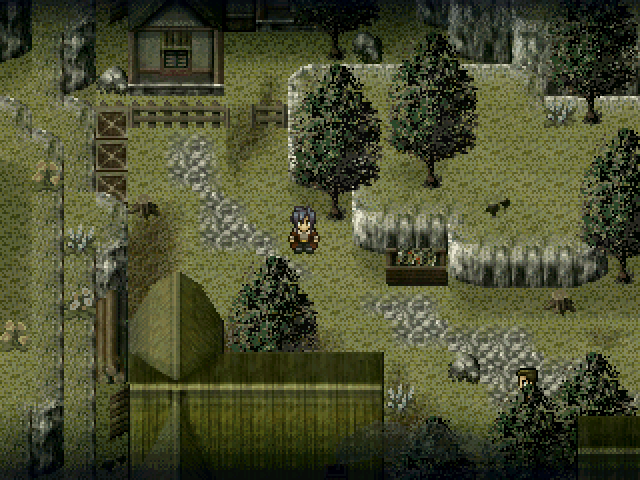
Perhaps this needs a bit of explaining. See, there's these tilesets by a Japanese artist that got really, really popular with a lot of RPG Maker developers. While I can't say what sort of range of genres these tiles got used in, I can say for certain they were popular with horror developers. By that same token, RPG Maker 2003 was seeing a growing trend of horror games.
So that's what this part was going to be — a tribute to the horror games of RPG Maker's yesteryear. My RPG!! may not be metafictional in its interaction with the player (yet), but it is metafictional in how it gestures towards other RPG Maker developers.
The next element to this arc's direction was how I was going to construct it. While Michael's World and the like were generally "outwardly" explored, I wanted this part's complexity to be stacked vertically. You would be spending a bunch of time in a central location, where the interaction with the world is through interlocking locations.
In the end though, I don't feel like that's what I ended up creating.

What I instead focused on was non-linearity. While there's elements to that in the first demo, they are pretty constrained and you're pretty quickly lead back to a core node in the story progress. Here, there's a lot more time for you to approach things in different ways before the next plot beat hits. But I just kind of forgot to take advantage of this sometimes, or realised just how annoying it was to write other times!
Let's take the above screenshots for example — at first I intended for there to be an underlying trust value between the townspeople and the party, one largely impacted by how you chose to access the town at the start of the arc. If you went in the main gate, nothing that special would really happen. If you snuck in, the townspeople would be more wary of you when you start kicking up a fuss.
But that never really happens. I'm not too sure why I forgot about this exactly, it could've been that as I progressed with development I felt I didn't have room to integrate it into the story flow — where what you could do ought to have been restricted by poor town standing, but I didn't know the best way to give you alternate approaches.
That isn't to say it doesn't affect something, but right now it's mostly for flavour, like the relationship value between party members creating divergences in certain scenes. (I wonder how many knew that even happens? This is something I kind of like about the dialogue-choice-less choice design.)
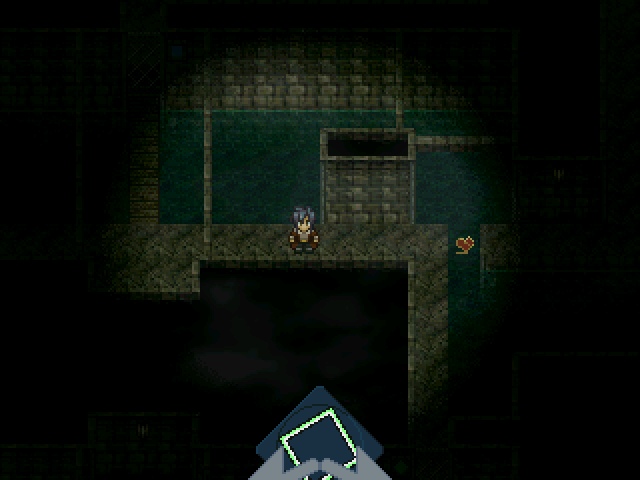
As part of the vertical stack concept, the town was to have sewers. There would be multiple ways to access the sewer system, and you'd sometimes be using it to affect the above-ground from it, and vice-versa. Like the townspeople relationship value, this also doesn't get taken advantage of as much as I might've intended. In its development, I also ended up designing myself into a corner, trying to resolve problems created by those choices, and I was copying puzzles and concepts I'd seen elsewhere without really understanding what those games were actually doing with those elements.
As you can see above, the sewer itself doesn't exactly appear spacious. The pathways are only one tile wide. Originally this was intentional, I wanted to try and avoid creating an Absurdly Spacious Sewer. The problem with this is it meant I couldn't use my usual visible-on-map event-based enemy encounters, because there would be no way to avoid an enemy in your path.
So I created a random encounter system! That's the indicator at the bottom of the screen. Depending on how you interacted with the dungeon, the indicator would slowly spin faster until an encounter was triggered. Walking near water made it go up faster, and closing doors behind you would kick the counter down several points. It fits nicely within the world-building, showing that the sewer puzzles themselves inhibit the monsters.
It also just sucks. The dungeon sucks to look at, random encounters are different to how the player has been taught encounters work up to this point (even in the same world!), and as noted, was created to solve a problem I'd designed myself into. Somewhere along the way I found myself thinking I was creating it just because — I thought it would be an interesting "difference in kind" as it were. And like... in theory it's an interesting concept, but it didn't really add anything in-itself I think.
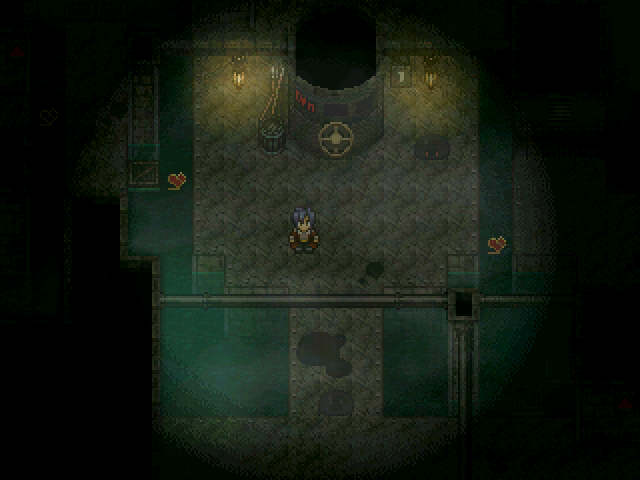
So the solution is to not do that. I redid the sewer section completely, made it much more complex and open, and added some simplified navigation puzzles earlier in its visit. This let me reintroduce the standard encounter system, as well as give a basic demonstration to the dungeon's main gimmick before thrusting the player into it properly. I did have to bandaid over some of it a little with some story-progress-based gating, but my hope is it'll at least feel natural.
This attempt just plain looks nicer. Trying to avert the spacious sewer trope was not really worth it if it just looked bad, and people aren't out here hoping video games make realistic sewers. That would just not be fun to play or explore.
Puzzles, Man
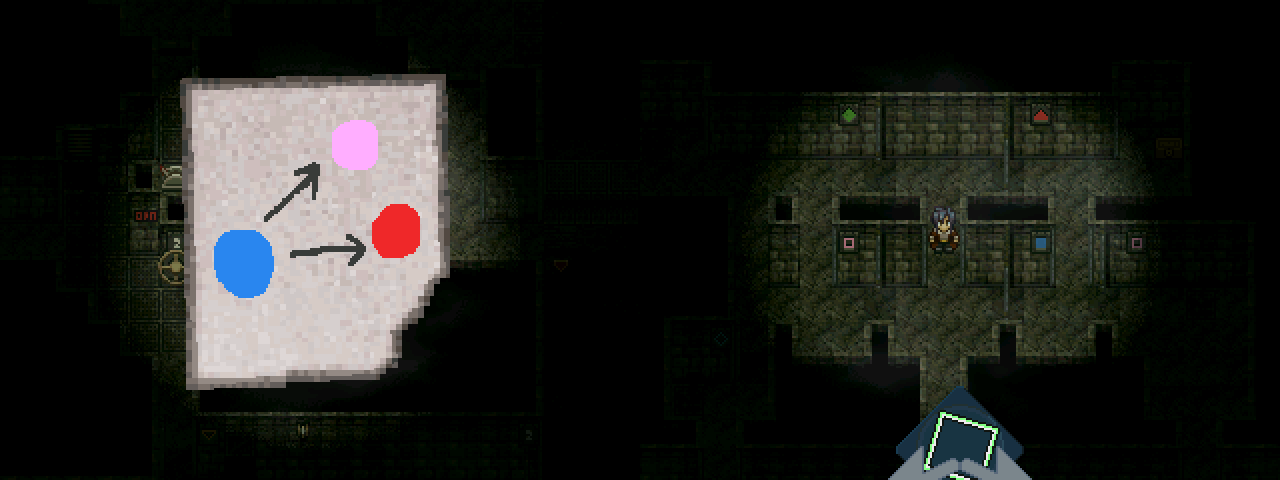
Besides being part of the vertical stack, I also wanted this dungeon to just be interesting on its own terms. I wanted it to be more than Bravely Default's idea of dungeons. I didn't end up implementing puzzles in Michael's mansion, but here I was adamant about trying something. I thought coloured doors would be simple enough... boy was I wrong.
That said, a coloured door puzzle — one where doors open or close based on different ones you enter — is simple enough conceptually. The problem is implementation. As I was building this system, I ended up... adding more colours. (This would also require me to distinguish their signs to assist those with colourblindness.) This created needless complexity by requiring the player to remember too many colour relationships, and you could get stuck.
It feels to me like navigation puzzles — where the player object is within the puzzle structure itself — should never let the player get trapped. Or if you do, the game's response to this should be more interesting than warping the player out for doing a maze wrong... which is what I resorted to. While my teleporters had an underlying narrative intent that made sense to me, I felt most players wouldn't get the implication. I knew I had to do this whole thing over.
So the new sewer layout actually solves two problems: it's nicer to look at and explore, and it gave me an excuse to toss out and rethink the door puzzle system. The most important thing is there's only two colours. (Technically three, but the third colour is handled separately.) In any given room, there'll always be either at least one door of each colour, or an alternate one-way route out of that space. Designing puzzles using only two toggleable doors is somehow both easier and more complex. I can more easily avoid trapping the player, but making them puzzles is a whole other hurdle.
It's at this point I decided I needed to review my source of inspiration.
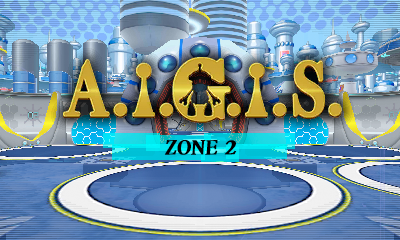
In Persona Q2's third labyrinth AIGIS, there are coloured doors. If you enter a yellow door, it (and every other yellow door) close, and all the purple doors open. If you enter a purple door, all of them close, and the yellow doors open. I thought that sounded a simple enough idea, let's use that!
Ah, but dear past me, that's not actually the point.

As anyone familiar with Etrian Odyssey will know, there exist enemies called FOEs. FOEs are ultra powerful, generally like fifteen levels above where you're expected to be at at this point in the story. They exist to be things to navigated around, not challenged head-on. These are the real puzzle.
In a handful of the door mazes in AIGIS there are two FOEs nearby, forming a security duo. If the first FOE sees you in its line-of-sight, it'll activate the second one further down the hall. This one is a beefcake that'll destroy you if you run into it — which you will if you keep going forward, there's no way around it. So you gotta backtrack and beat up the first FOE instead, by navigating the door maze to get behind it.
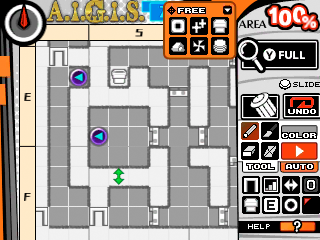
And this is a neat puzzle! But My RPG!! doesn't have FOEs in this dungeon. I wasn't about to add them, but it did inform me that I was trying to take what was essentially half a puzzle and wonder why I kept ending up with the player being able to walk out a hole in the wall. So ultimately, I had to concede and let this system serve a slightly different purpose. If I wanted complexity to my navigation puzzle, I would have to play around with other elements in here.
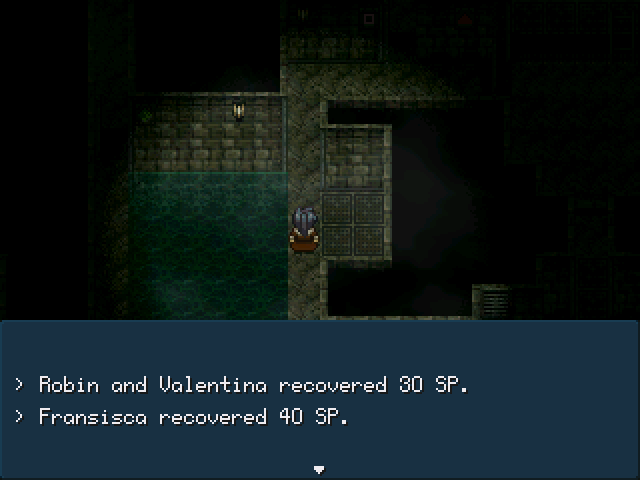
This sewer system really was the bane of my existence. While it wasn't the biggest thing that was stressing me out to the point of writer's block, a lot of problems with this story arc were down to bad design decisions I was making with it. This next point wasn't really an issue as much as it was something I later looked back on as a weird design choice.
At one point in the story the party gets trapped in the sewer. If the player was struggling, I wanted to give them a way to survive so as to not soft-lock their save if they couldn't heal or fight the dungeon's monsters. I created a system where a mysterious force (the same one involved with the puzzle teleporters) would heal the party's SP when at critical.
Like with the teleporters this had an undercurrent of narrative relevance. Like with the random encounter system I later found myself thinking it just kind of sucked, and is really only narratively relevant if you squint at it. It felt the most obvious bandaid solution of all of my bandaid-ing I'd been doing with this part. Like with the door puzzle system, the solution was much simpler. I just used the existing campfire mechanic. Thanks to the existence of the event-based encounters, I could also once again ambush the player if they use the campfire willy-nilly.
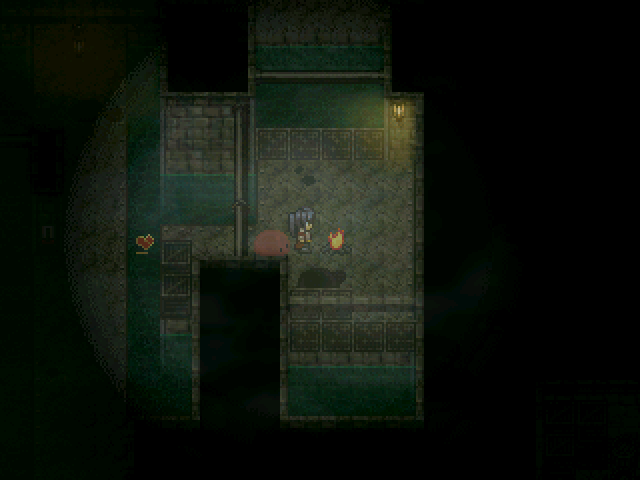
And now finally, finally, I think we can talk about the bit that I was stuck on the most.
Boxed In
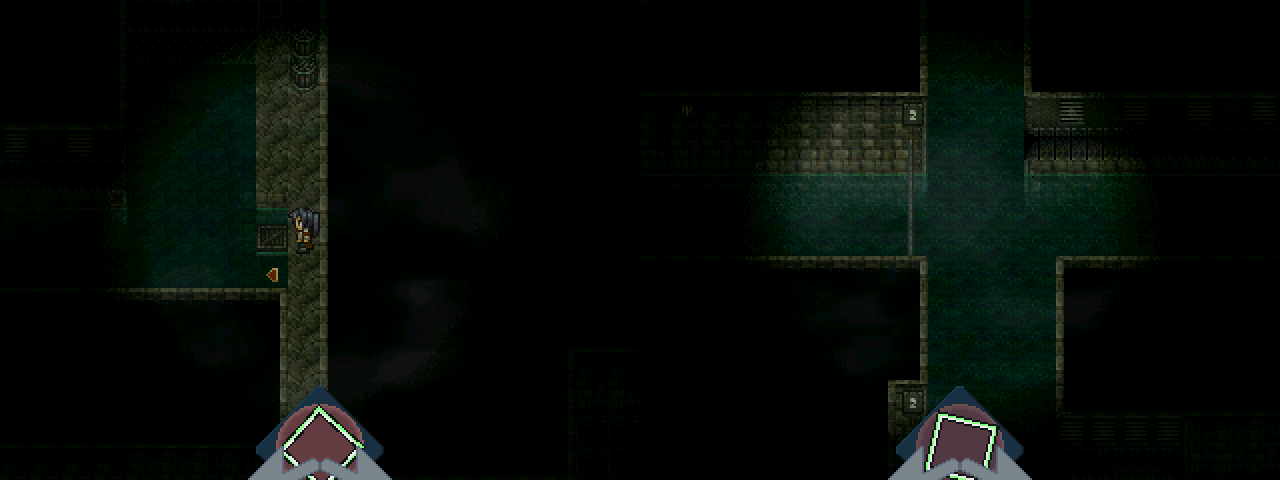
This fucking box.
I didn't plan for the sewers to be a "real" dungeon. When I describe it as part of the vertical stack involved with interacting with the town, I envisioned it simply as part of the town itself, though I understand if the distinction comes off as semantics. No, the real dungeon was actually going to be a castle north of the town (sort of), which you would access later in the story.
The goal of the box itself was simple — it was to be dropped down into the sewer from the castle's main floor, you'd push it through the water into the right place, and it would become a platform that would let you reach the boss and continue the story. I just needed to keep the player from rushing straight for the castle, and make getting the box down there somewhat interesting. But boy were there complications along the way.
I think I plain forgot my plans for the box and its push-through-water puzzle. (This is what happens when real life bullshit and trauma put you off working on things for like, years.) I think I wanted it to move based on how you controlled the gates in the water, but the physical logic didn't make sense when I reviewed it, as if I'd messed something up in the code compared to what I intended, dropped development mid-way, and then forgot what I needed to fix once I picked the project up again.
Never mind how to do the box unlocking puzzle itself. Yes, there was to be a puzzle for getting the box to use in the box puzzle. Look, I really wanted to create interesting engagement with the non-battle space.
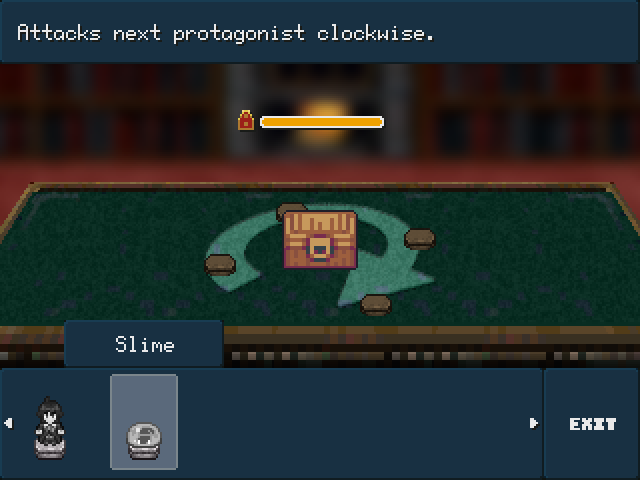
Like with thoughts for a puzzle in the Mansion, I conceptualised a puzzle for this castle. You were to engage with a screen like this mockup, which would unlock a treasure chest... that would drop through the floor. Fransisca would get pissed off, and you'd go into the sewer to get it, only for it to instead be used for the water puzzle.
I don't feel confident at thinking up puzzles, and to plan this thing out I had to try and think of a logically sound sequence of game pieces based on established rules. It only became more complicated when I considered the idea of "a puzzle where you must break the rules", to try and make it thematically relevant. The very idea is paradoxical — in the game code itself, you will still be following the rules it's expecting for you to win, to get the box. What the game is actually doing is lying to you what those rules are.
So to give an outline of what I had going, because I suspect this sounds rather tangled:
- There is a box the player needs to get to the boss in the sewer.
- I wanted to hold the player off from getting that box, but my only real idea was a cutscene that would play after a certain point that would give access to the castle. I wasn't confident about what would happen in this scene.
- In the castle, there was a puzzle I wasn't confident how to design. The reward for this was a box.
- Once you got the box into the sewer, there was the fact I messed up the "physics" of how the box would sensibly float around.
- And this is all on top of the sewer map itself just plain looking bad.
What's the solution this time? Well I'm still working on that, but ultimately it's another case of pulling things back and re-examining the original question, given my answers/bandaids were causing me so much trouble.
One thing I found myself thinking was I ought to do away with the castle. There's nothing wrong with the castle itself, outside the fact I didn't have confident ideas for its layout. Rather, I felt bad that I had now twice put a big imposing building north of the central population. First there was the Mansion, and now there was this castle. I didn't want to repeat this same design, I wanted to mix things up a bit each time!
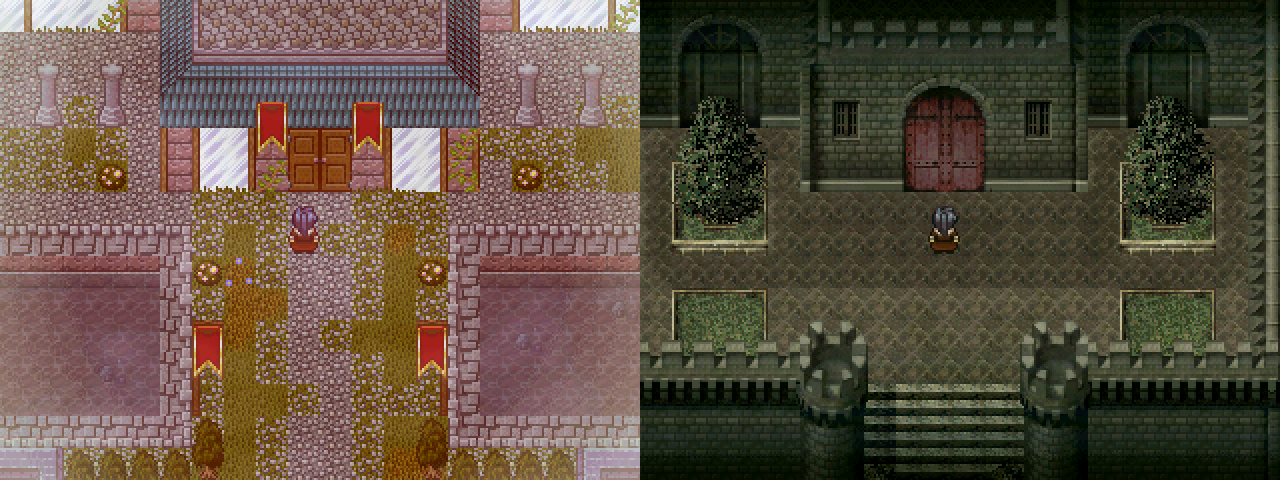
I was talking with a friend about how I felt blocked boxed in by my troubles with getting the player to the point I needed. Their proposal was that if the point is for a protagonist to "break the rules" this world had established, why not have the access be something involving that? Somewhere along the way we got to the idea of what if the player could just rush for the boss, but it was advisable that the player investigate around town to weaken it — questioning the rules it held aloft.
I admittedly struggle with the balancing act of things being optional/missable, and being sure the player sees everything I want them to. I like the idea of optional things in theory, but in the case of "getting to the box" I wanted to use that space between plot beat A and B to flesh out the world and its people. Wouldn't it be kind of unfortunate if the player could ignore all that?
Regardless, instead of having a hard gate, it's instead recommended you do certain things. The castle would be remade into an optional location, and instead of setting up some kind of puzzle to be able to get to the boss, you can just go to it, but you might be better off dealing with some other things first. The sewer was already fleshed out beyond its original concept, I may as well make it the main attraction.
Some Kind Of Conclusion
As I said once before, sometimes if logic or a design is giving you no end of trouble, the better move is to design around it than try to create endless bandaids to fix troublesome scenarios. My stacking of fixes upon fixes were only distracting me from the real problems, and it took willing to start some things over to really resolve them.
The new sewer map is just plain better, and I'd like to think too that the focus on engagement with the world is going to feel better than a dedicated random puzzle screen, even if I would like to do that sort of thing somewhere. (Just again, that's hard.)










